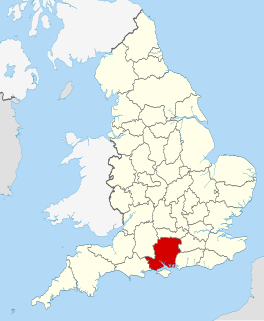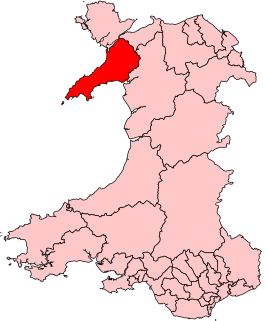The Isle of Wight, an island off the south coast of England, was part of the historic county of Hampshire (originally Southamptonshire), and was linked with it for parliamentary purposes until 1832, when it became a county constituency in its own right as it had also been during the Protectorate (1654–1659). Hampshire (including the Isle of Wight), located in the 21st century region of South East England, was represented in Parliament from the 13th century. This article provides a list of constituencies constituting the Parliamentary representation from Isle of Wight.

The Isle of Wight is a county and the largest and second-most populous island in England. It is in the English Channel, between 2 and 5 miles off the coast of Hampshire, separated by the Solent. The island has resorts that have been holiday destinations since Victorian times, and is known for its mild climate, coastal scenery, and verdant landscape of fields, downland and chines.

The historic counties of England are areas that were established for administration by the Normans, in many cases based on earlier kingdoms and shires created by the Anglo-Saxons and others. They are alternatively known as ancient counties, traditional counties, former counties or simply as counties. In the centuries that followed their establishment, as well as their administrative function, the counties also helped define local culture and identity. This role continued even after the counties ceased to be used for administration after the creation of administrative counties in 1889, which were themselves amended by further local government reforms in the years following.

Hampshire is a county on the southern coast of England. The county town is the city of Winchester. Its two largest cities, Southampton and Portsmouth, are administered separately as unitary authorities; the rest of the county is governed by Hampshire County Council.
Contents
- List of constituencies
- Constituencies wholly in the Isle of Wight
- Mostly mainland constituency including the Isle of Wight
- Periods constituencies represented
- Summaries
- Summary of Constituencies by Type and Period
- Summary of members of parliament by Type and Period
- See also
- References
In 1890 the Isle of Wight became an administrative county. In 1974 it became a new non-metropolitan county and in 1995 a ceremonial county and unitary authority (with unchanged boundaries).
The first part of this article covers the constituencies wholly within the area of the Isle of Wight. The second part refers to the constituency of Hampshire, which included some territory from the Isle of Wight 1290–1654 and 1659–1832. The summaries section only refers to the constituencies included in the first section of the constituency list.




